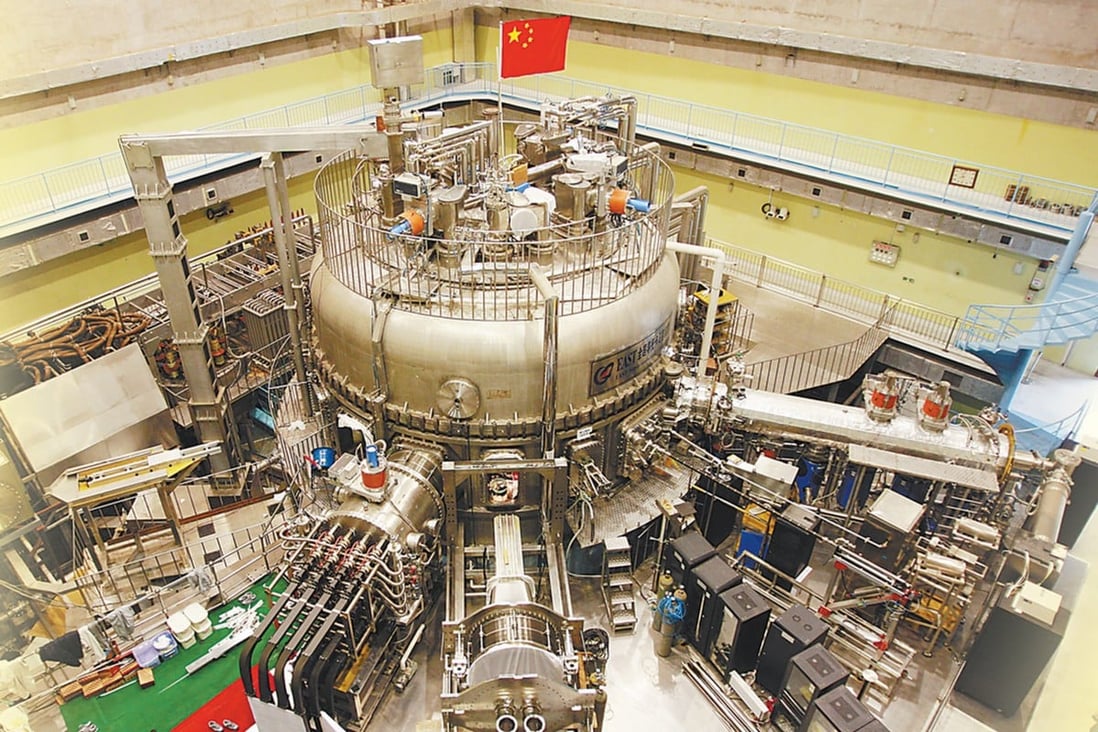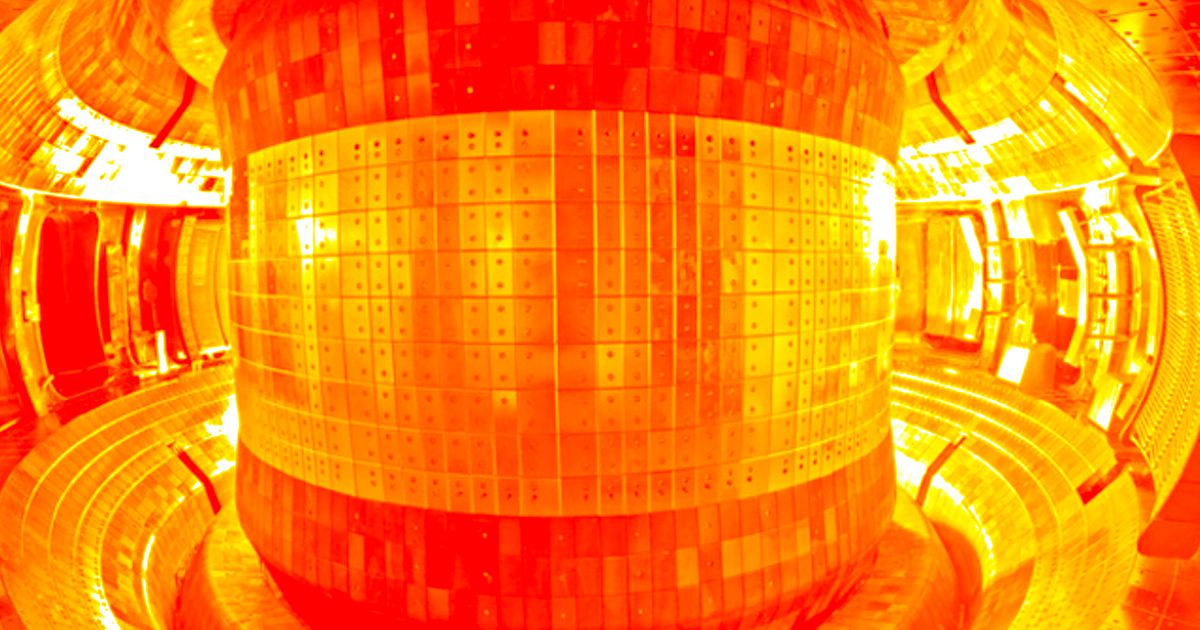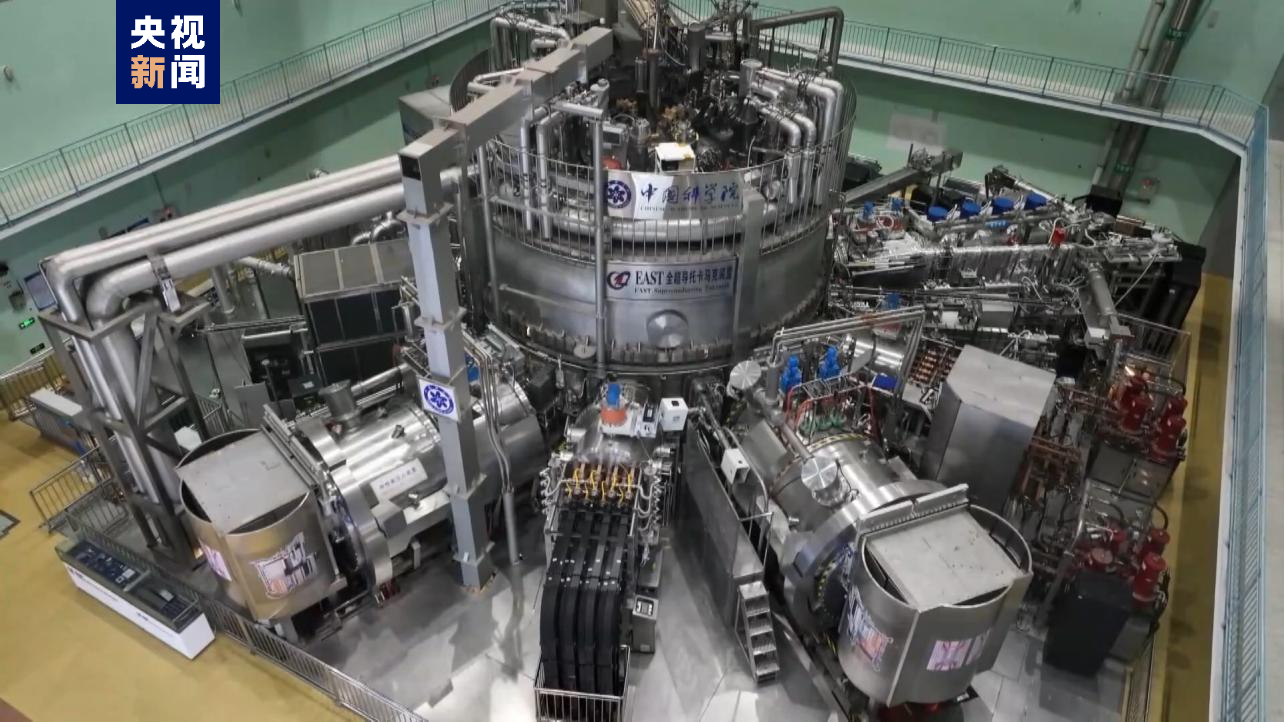China is progressing on its “artificial sun project” to develop a nearly infinite energy source. Chinese scientists working on this project have uncovered a previously unknown mode of plasma activity that may enable more reliable and efficient nuclear fusion energy production.
A breakthrough and demonstration of a new plasma operation scenario called Super I-Mode was made on the Experimental Advanced Superconducting Tokamak (EAST), according to Hefei Institutes of Physical Science, Chinese Academy of Sciences (CAS).
The EAST reactor at Hefei discovered the “Super I-mode” for the first time in December 2021 after a record-breaking 17-minute operation, reported SCMP. The findings, rigorously reviewed by peers, were published on January 6, 2023, in the international journal Science Advances.
The new high-confinement and self-organizing Super I-mode exemplifies the machine’s advancement and dependability and provides insights into how to keep the plasma functioning steadily and for an extended time.
The record-breaking run, which employed magnetic fields to heat a plasma-charged gas composed of free-moving electrons and hydrogen ions to a temperature of 70 million degrees Celsius, managed to contain high energy both at the plasma edge and farther into the plasma.

Further testing revealed that the novel mode has a high potential for use in the International Thermonuclear Experimental Reactor (ITER), according to the Chinese Academy of Sciences researchers and their collaborators from the United States, Europe, and Japan, among others.
The largest fusion reactor in the world, ITER, is currently being built in France. This is a critical breakthrough for ITER and fusion, according to physicist Richard Pitts, who oversees experiments and plasma operations at ITER.
Pitts added that the EAST tests are critical because they revealed for the first time that tokamak plasmas could be maintained and regulated for very long pulses – more than 1,000 seconds, which is equivalent to the long pulses ITER aims for in the long term.
Pitts noted numerous challenges connected with very long pulse operations, and it is quite reassuring for ITER to see that this has been accomplished, even on a considerably smaller device.
According to Song Yuntao, the study’s co-author, one of the key benefits of the super I-mode was its capacity to lessen energy loss near the plasma edge, where the superhot gas directly faced the tokamak’s heat shield.
Song explained that if we equate nuclear fusion processes to lightning bolts, researchers aim to gather as many bolts as possible in a magnetic cage and transfer the energy stably and sustainably for human use.
Song said that the new operating mode discovered on EAST allows the Chinese scientists to capture more lightning bolts while sustaining steady-state functioning for an extended period.

Why Is The New Super I-Mode Important?
Fusion is the process of two hydrogen atoms fusing to produce an atom of helium while emitting tremendous energy, which powers the sun and stars.
Scientists aim to recreate the sun’s power on Earth and want the fusion process to be well-controlled. They expect society to be fueled in a new, far more efficient, and environmentally friendly way.
One of the most promising routes towards managed nuclear fusion is through tokamaks like EAST and ITER. The challenge is still in producing high-performance plasma and confining it for long enough for the hydrogens to combine to produce net power as the sun does.
Liu Zhihong from the Institute of Plasma Physics in Hefei stated that fusion scientists employ operating parameters, or “modes,” to control the condition of the plasma. These factors include temperature and energy.

Most tokamaks today, including EAST, run in high-confinement mode or H-mode. Large reactors like ITER were made possible by H-mode, which was first detected on a tokamak in Germany in 1982. H-mode was at least 100 times more effective in confining plasma than the prior low-confinement mode.
However, a significant drawback of H-mode operation is that it might cause a sudden release of energy at the plasma edge and harm nearby materials.
To avoid harming the surfaces, scientists have recently explored the I-mode, also known as improved confinement mode, in which the fusion energy is released through a more continuous process.
But, Scientists were astonished to learn that, when compared to the I-mode, the new mode had considerably enhanced energy confinement, earning it the moniker Super I-mode. Pitts pointed out that since super I-mode was only observed on EAST, it is unclear whether ITER could use it. He added that ITER planned to operate in “advanced scenarios” akin to the EAST experiments.
“These advanced scenarios allow you to run very long plasma durations – up to 3,000 seconds on ITER. In the H-mode, ITER can only go up to about 500-second plasma duration,” Pitts said.
EAST is the first of its kind to run with pulses of 1,000 or less. Since running in 2006, the reactor has supported thousands of experiments conducted domestically and with the global fusion community.
- Contact the author at ashishmichel(at)gmail.com
- Follow EurAsian Times on Google News




